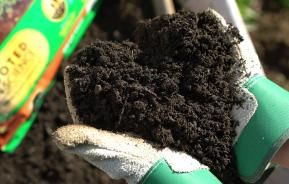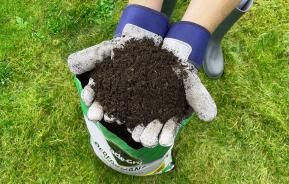Mountain ash, or rowans, are attractive, deciduous, ornamental trees, many of which are suitable for even small to average-sized gardens. They look fabulous in spring, covered in their flowers, and again in autumn when their fruit and autumn foliage provide more interest and colour.
How to grow mountain ash
Cultivating mountain ash
The majority of mountain ash species and varieties aren’t too fussy about their position – they will grow in open, sunny sites or partial shade. They prefer a fertile, well-drained soil enriched with lots of organic matter, which holds plenty of moisture in spring and summer, doesn’t dry out or become waterlogged. Mountain ash trees will grow in just about all soils types.
Mountain ash varieties
- Sorbus aucuparia, the common mountain ash, is an upright tree with clusters of white flowers in late spring, followed by orange-red berries in autumn and yellow autumn leaf colours.
- Sorbus cashmiriana can be grown as a large, spreading shrub or small tree. The pink flowers are followed by white fruit in autumn.
- Sorbus commixta ‘Embley’ is an upright, medium-sized tree with creamy-white flowers, deep red fruit and bright red and orange autumn leaf colours.
- Sorbus ‘Eastern Promise’ is a small, rounded tree with clusters of small white flowers, rose-pink berries in autumn and purple and orange-red autumn leaf colours.
- Sorbus ‘Joseph Rock’ is an upright tree with white flowers, yellow berries and orange, purple and red autumn leaf colours.
- Sorbus reducta is a suckering shrub with small clusters of white flowers followed by pale pink to white fruit and purple autumn leaf colours.
- Sorbus sargentiana is a spreading medium-sized tree with white flowers, large clusters of red berries and orange-red autumn leaf colours.

Planting mountain ash
Plant bare-root mountain ash trees between November and March, and container-grown ones any time of year, but preferably in autumn, winter or spring. Dig a hole 60x60cm (2x2ft) and 30cm (12in) deep. Add a layer of organic matter – such as compost or well-rotted manure – to the base of the hole and dig in. Place the roots in the planting hole and adjust the planting depth so that the tree is planted at the same depth as it was originally growing and the top of the roots are level with the soil surface.
Mix in more organic matter with the excavated soil and fill in the planting hole. Stake the tree with a rigid tree stake and two tree ties so that it is fully supported against the prevailing winds. Water in well, apply a granular general feed over the soil around the tree and add a 5-7.5cm (2-3in) deep mulch of well-rotted garden compost or bark chippings around the root area.
If planting in the lawn, create a turf-free circular bed around the tree with a minimum diameter of 60cm (2ft).
Where to plant mountain ash
Flower borders and beds, focal point, city and courtyard gardens, natural and wildlife gardens, cottage and informal gardens.
Mountain ash care
Mountain ash/rowans are low-maintenance trees, needing little care and attention once established.
They may need watering during prolonged dry periods in summer – particularly in the first few years to ensure they establish well. Feed with a general granular plant food in spring.
When to prune rowan trees
Mountain ash/rowans need little or no maintenance pruning, except to remove dead, diseased or dying growth and to thin out overcrowded and rubbing branches. If pruning is needed, it is best carried out any time from late autumn to early spring.
| Flowering season(s) | Spring |
|---|---|
| Foliage season(s) | Spring, Summer, Autumn |
| Sunlight | Partial shade, Full sun |
| Soil type | Chalky, Clay, Loamy, Sandy |
| Soil pH | Neutral |
| Soil moisture | Moist but well-drained |
| Ultimate height | Up to 10m (33ft), depending on species and variety |
| Ultimate spread | Up to 8m (26ft) depending on variety |
| Time to ultimate height | 20-30 years |








